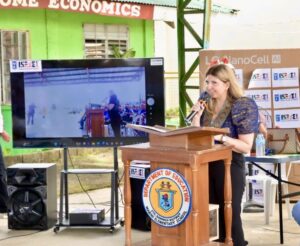
Investors’ confidence remains solid in the Philippines as evidenced by high reinvested earnings and rising foreign investment approvals by the Board of Investments (BOI) and other Investment Promotion Agencies (IPAs), despite the decline in the country’s foreign direct investment (FDI) inflows in the first semester of this year.
This was the statement issued on October 2, 2023 by Department of Trade and Industry Secretary Alfredo Pascual in response to a news report saying FDI declined by 20% to USD3.9 billion in the first half of 2023 compared to the same period last year based on Bangko Sentral ng Pilipinas (BSP) data.
Secretary Pascual said it is essential to recognize FDI numbers reflect decisions investors made well before the actual funds’ inflow recorded by BSP.
According to him, global financial conditions, especially the high inflation and interest rates during the first half of 2023, contributed to this FDI decline. However, such decline is not a phenomenon unique to the Philippines, as other ASEAN countries also experienced drops in their FDI.
“Factors such as inflation rates and investment rates substantially influence FDI decisions. Stable inflation and competitive interest rates generally attract FDI, whereas high inflation and unfavorable rates can repel foreign investors,” Pascual noted. “Under the Marcos Jr. administration, a representative metric of investment performance is the foreign investment approvals by the DTI’s IPAs.”
Pascual emphasized there are also foreign investments in the Philippines that are not registered with the IPAs and they happen without going for incentives.
He also pointed out that since 2022, there has been a consistent increase in these approvals by the DTI-BOI and other IPAs.
Total IPA approvals from January to June 2022 were at USD1.06 billion; from July to December 2022, USD3.28 billion; and from January to June 2023, USD8.45 billion.
Pascual stressed it is crucial to understand the realization of timelines of these investments. FDI in a particular year does not solely arise from recent investment leads. FDI inflows could be based on decisions made years prior and might be realized in stages over considerably depending on actors like the project’s nature, the involved sector, and the host’s country regulatory environment.
Taking BPO centers as an example, Pascual said, “If expanding or within established spaces, might only take months. Yet, if constructing a new facility, the timeline extends. Manufacturing projects, especially if new, can take 4-5 years. Renewable energy projects have varying timelines, with large-scale projects needing several years.”
“The future looks promising, given the rising trend in foreign investment approvals by BOI and our other IPAs and the continued efforts to promote the Philippines as an attractive investment destination,” Pascual added.


